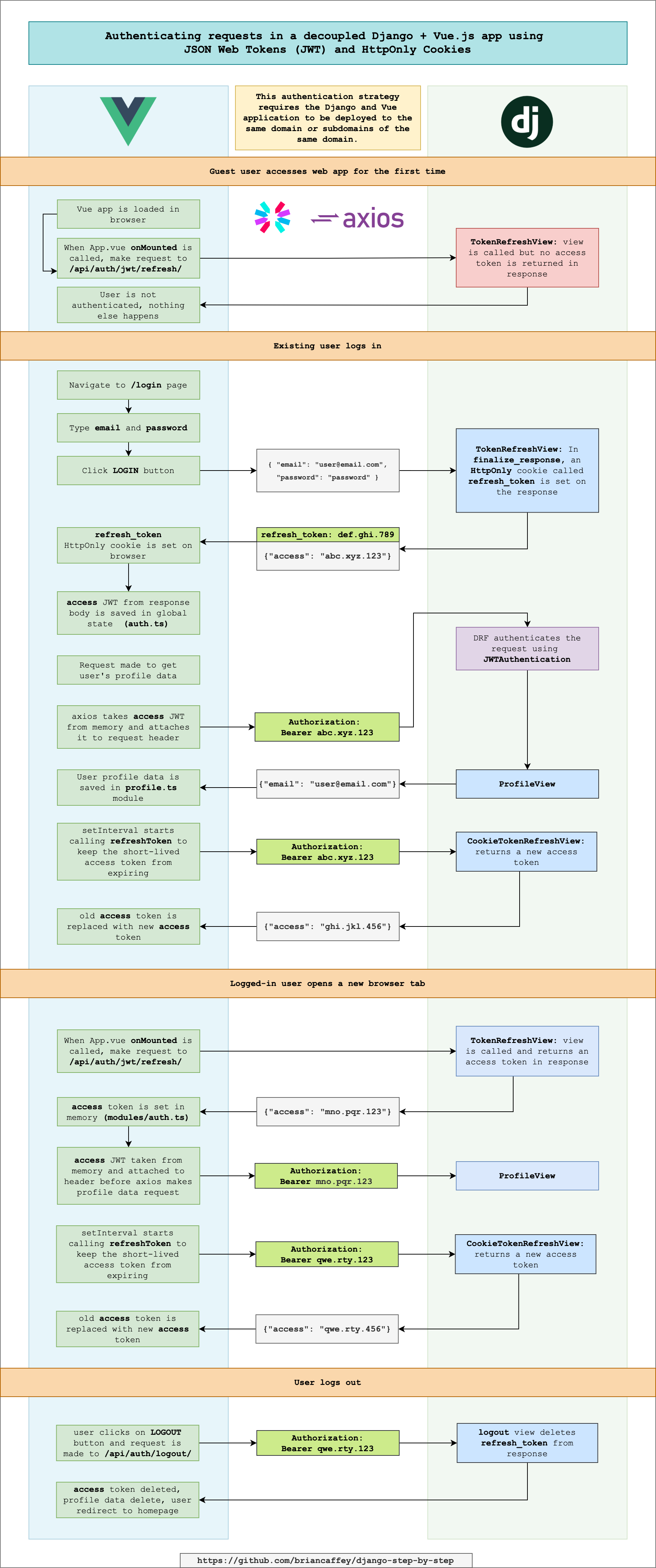Authenticating requests with JWT tokens stored in HTTPOnly cookies in Django
更新日期 2021年8月1日
tl;dr
If you want to use JWTs to securely authenticate requests to Django REST Framework applications in a decoupled frontend JavaScript application, you can do the following: store the access token in memory and store the refresh token in an HttpOnly cookie. The refresh token is used to request new access tokens on an regular interval.
Some context
Django is a web framework based on the Model, Template, View (MTV) paradigm. Django is increasingly used as an API server that is coupled with a Javascript or native frontend application.
JWT Auth with HttpOnly Cookies
Following this guide:
https://hasura.io/blog/best-practices-of-using-jwt-with-graphql/#jwt_security
We can reimplement our JWT authentication setup to be more secure.
DRF Simple JWT modifications
We need to change the default behavior of the views from DRF simple JWT as described in this issue:
https://github.com/jazzband/djangorestframework-simplejwt/issues/71

This diagram shows how authentication data moves between the Django backend and the Vue.js frontend running in the browser.
This article should now be complete complete